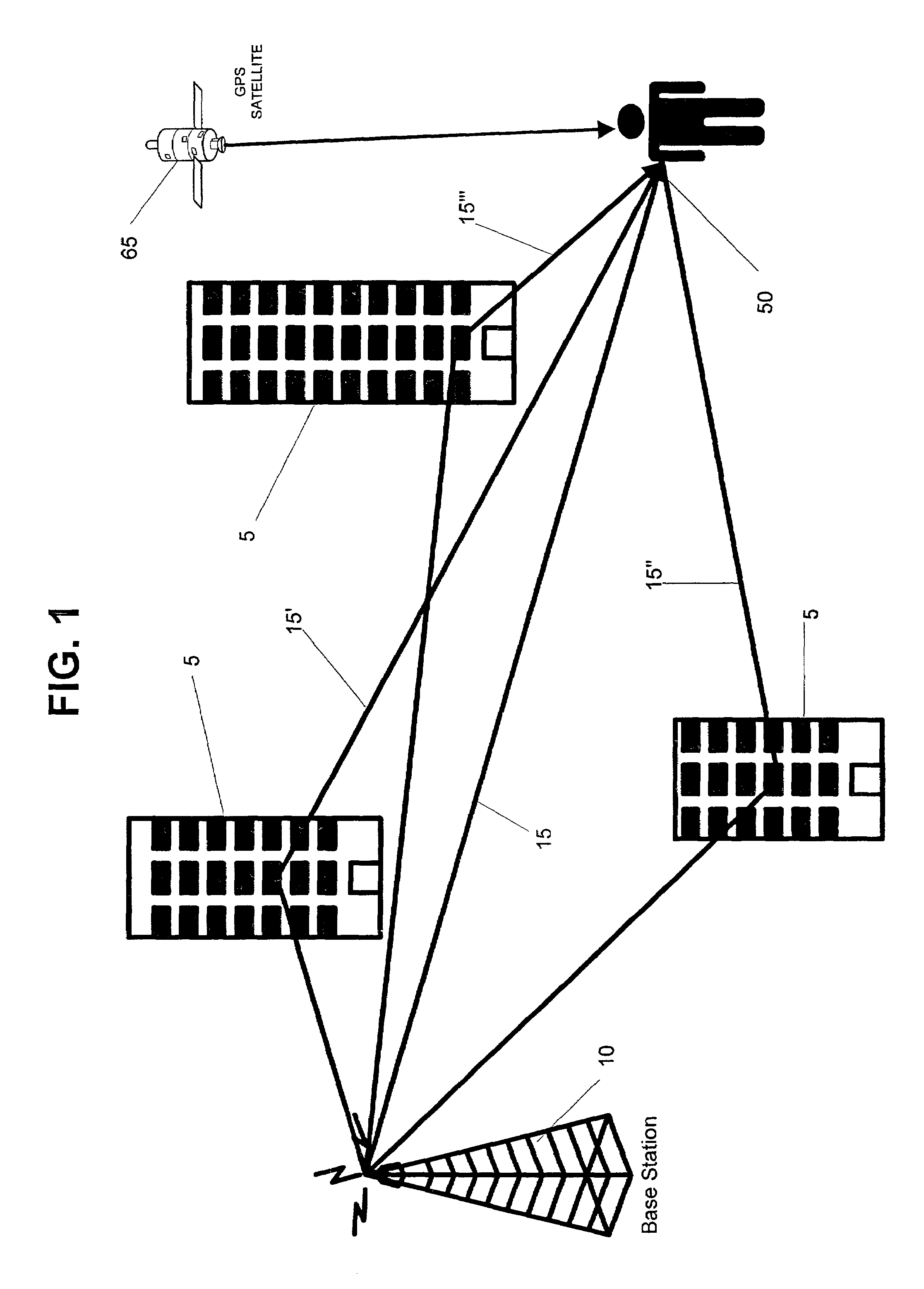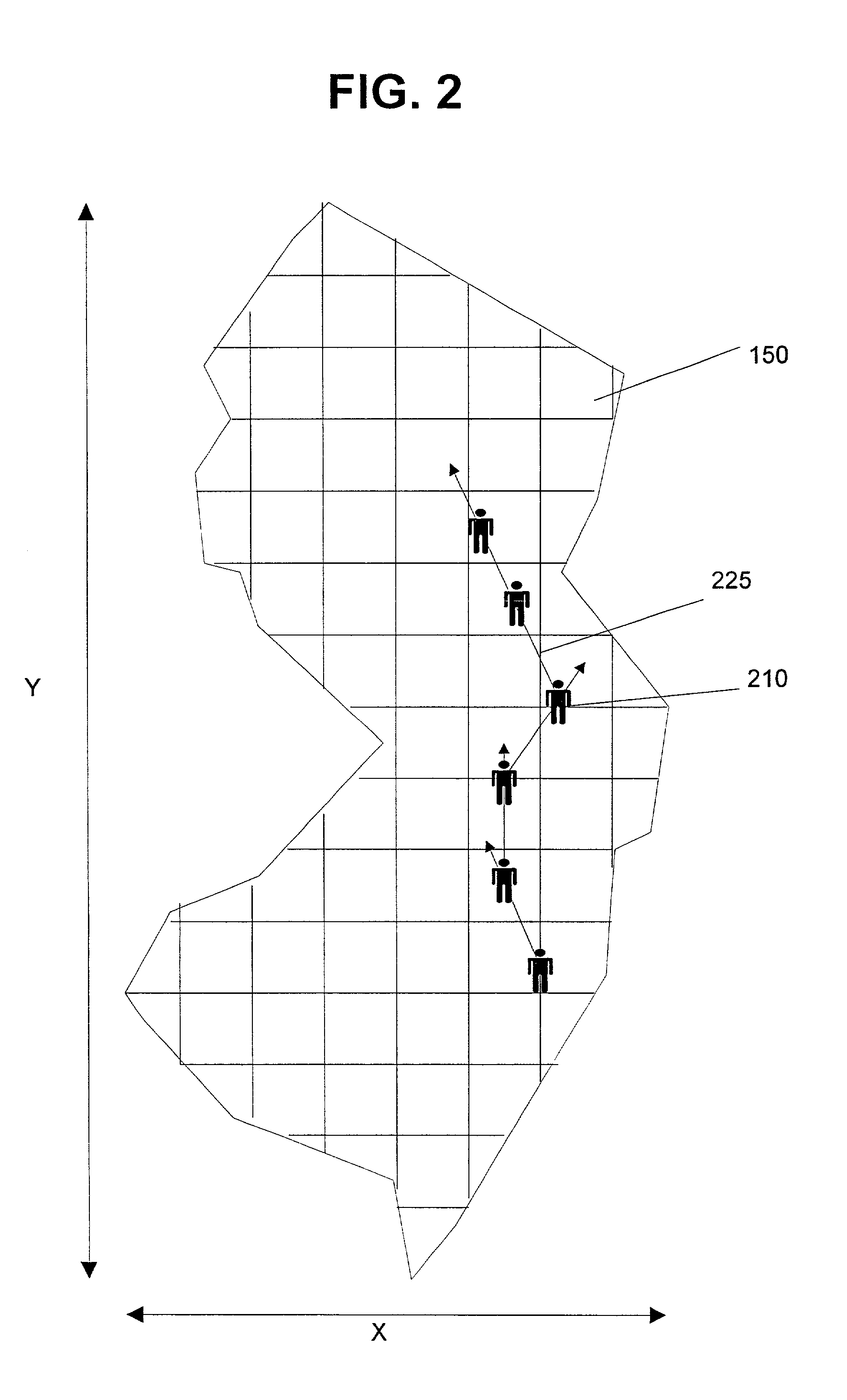System and method for reducing multipath interference in packetized wireless communication systems
a wireless communication system and multi-path technology, applied in the field of wireless communication systems, can solve the problems of data transmission being subject to multi-path interference, individual packets of data transmission may encounter various obstacles, and achieve the effect of reducing bandwidth overhead and reducing bandwidth overhead
- Summary
- Abstract
- Description
- Claims
- Application Information
AI Technical Summary
Benefits of technology
Problems solved by technology
Method used
Image
Examples
Embodiment Construction
[0014]With reference to FIGS. 1–4, there will be described a system and method for reducing multipath interference (commonly referred to as Doppler impairment) in wireless, packet-based communications. As shown in FIG. 1, signals packets 15, relayed from a base station 10 to a mobile device 50, for instance, can be reflected off obstacles 5 so as to cause multiple reflections 15′, 15″, 15′″ of a particular signal packet 15 to be received by the mobile device 50. As described above, the inability to effectively filter reflections 15′ can have adverse and undesirable effects on the transmission of wireless communication signals 12. One skilled in the art will readily recognize that base station 10 and mobile device 50 can both function as a “transmitter” and “receiver”, as commonly known in the art, and use of the terms “base station” and “mobile device” are for illustrative purposes only.
[0015]According to an embodiment of the present invention, both the mobile device 50 and base sta...
PUM
 Login to View More
Login to View More Abstract
Description
Claims
Application Information
 Login to View More
Login to View More - R&D
- Intellectual Property
- Life Sciences
- Materials
- Tech Scout
- Unparalleled Data Quality
- Higher Quality Content
- 60% Fewer Hallucinations
Browse by: Latest US Patents, China's latest patents, Technical Efficacy Thesaurus, Application Domain, Technology Topic, Popular Technical Reports.
© 2025 PatSnap. All rights reserved.Legal|Privacy policy|Modern Slavery Act Transparency Statement|Sitemap|About US| Contact US: help@patsnap.com



